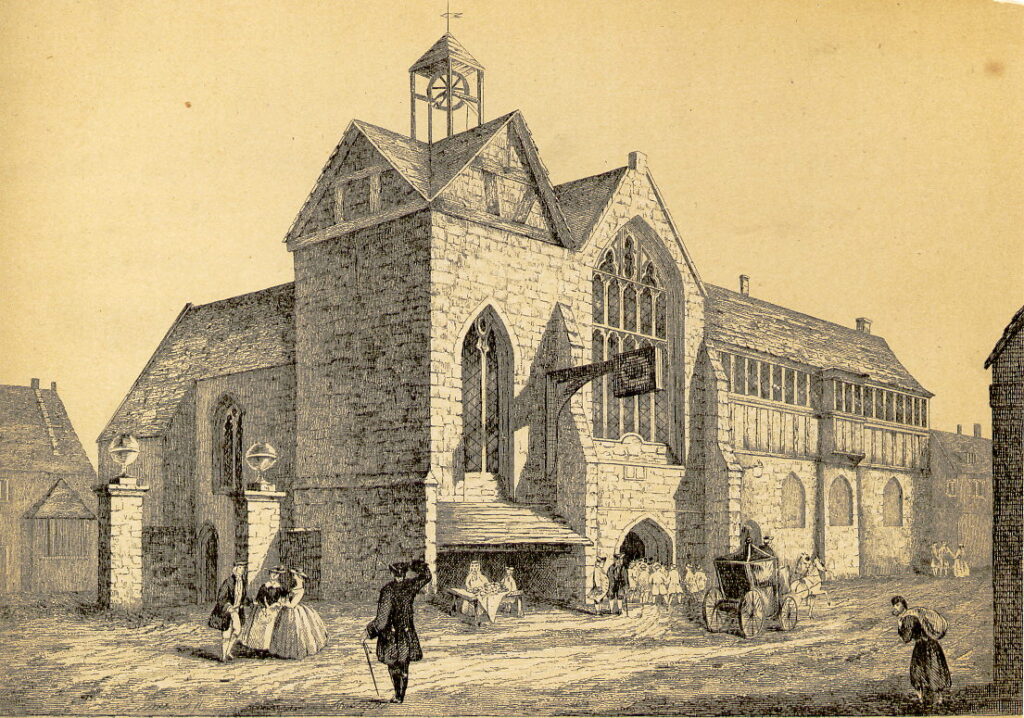
Coventry Society historian, Peter James, tells us the fascinating story of Sir William Dugdale, perhaps Warwickshire’s most famous historian. Peter writes…
Born on 12th September 1605 at Shustoke in Warwickshire, William Dugdale lived and was educated locally. He was taught by a curate at Nether Whitacre until 1615. Aged ten he then moved to Coventry where he lived for the next five years. In 1558 John Hales had founded a free school at the bottom of Bishop Street in Coventry. This is where William was a pupil and studied during his five year stay in the city.
He married Margaret Huntbach from Staffordshire in 1623 and two years later after his father had died he bought Blyth Manor near Shustoke. He became friends with other local antiquarians and began researching the history of Warwickshire. This work eventually took him to London where Sir Christopher Hatton became his patron. By 1639 he held the position of Rouge Croix Pursuivant of Arms in Ordinary at the College of Arms where he lived. In 1665 the first volume of Monasticon Anglicanum was published just a year before the first volume of Antiquities of Warwickshire.
The Antiquities of Warwickshire
Coventre
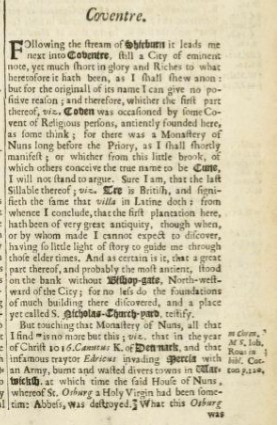
Following the stream of Sherborne it leads me next into Coventre still a city of eminent note, yet much short in glory and Riches to what heretofore it hath been as I shall show anon: but for the original of its name I can give no positive reason; and therefore, whither the first part thereof viz. Coven was occasioned by some convent of religious persons anciently founded here as some think; for there was a Monastery of Nuns long before the Priory, as I shall shortly manifest; or whither from this little brook; of which others conceive the true name to be Cune I will not stand to argue. Sure I am that the last Syllable thereof viz.Tre is British and signifieth the same that villa in Latin doth……….
The Antiquities of Warwickshire contains hundreds of items from parish records, leger books, charters, gravestones, tombs, portraits and maps.
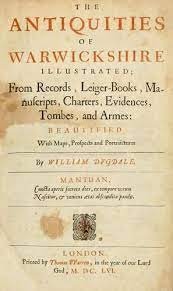
In 1642 King Charles I had required William to meet him at York. When war broke out on 22nd August 1642 he was deputised and ordered to visit Warwick and Banbury Castles to demand their surrender. On 19th August Charles I had been refused entry to Coventry so his artillery bombarded the city before the king’s army retreated to Leicester.
So did this act of defiance in Coventry affect William a staunch Royalist and cause him to describe Coventry as “much short in glory and Riches“?
Monasticon Anglicanum
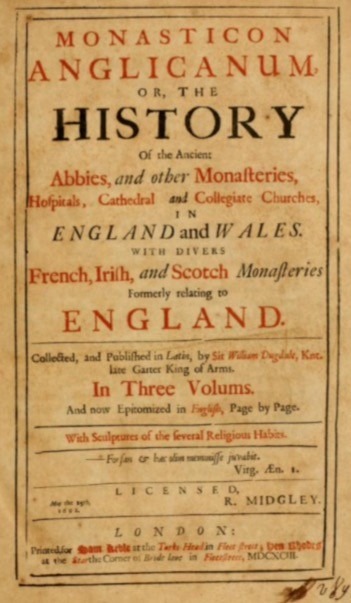
The Monasticon Anglicanum consisted of three volumes describing the history of ancient Abbeys, Monasteries, Hospitals, Cathedrals and Churches.
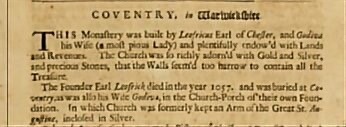
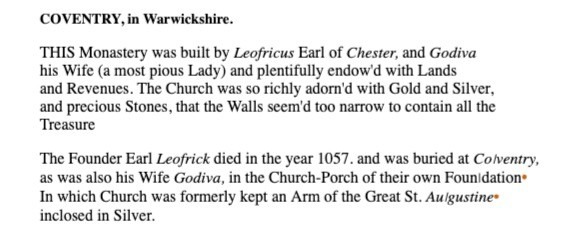
The original version of Monasticon Anglicanum was written in Latin, it was translated into English and abridged by Thomas Wright in 1693.
William spent the rest of his life involved in historical research and wrote a number of History Books. The Ancient Usage of Bearing Arms was published in 1682 just a few years before his death at Blyth Manor. He was 80 years old when he died on 10th February 1686 and some sources suggest that he’d had 19 children.
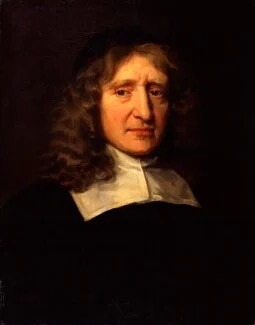
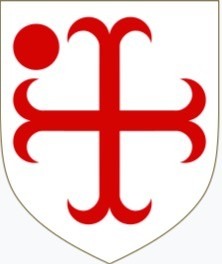
He is recognised as someone who promoted Medieval History as an academic subject to be researched and studied. His name lives on through the Dugdale Society formed on 22nd January 1920. Its aim is to publish documents and texts regarding the history of the County of Warwickshire.
